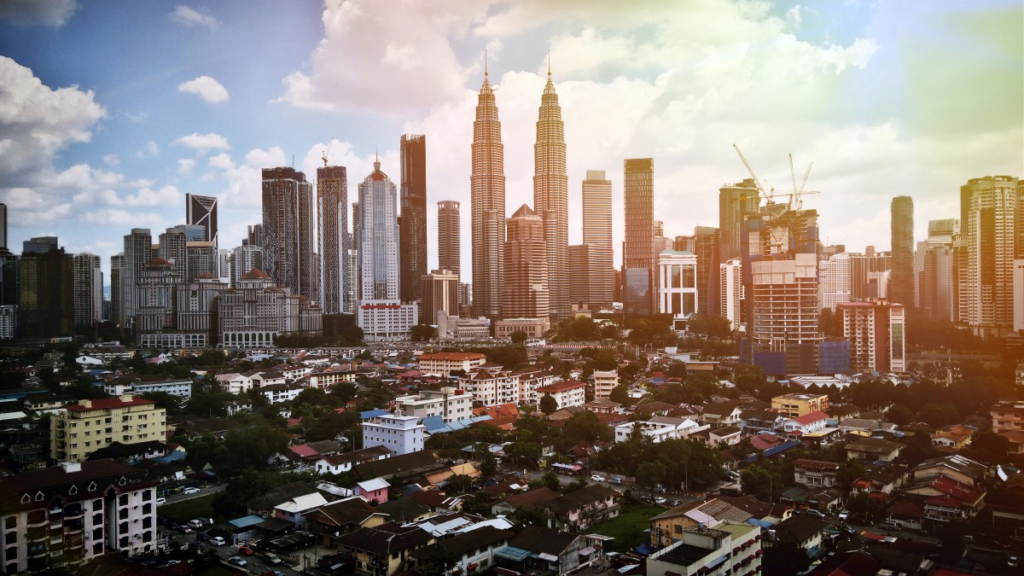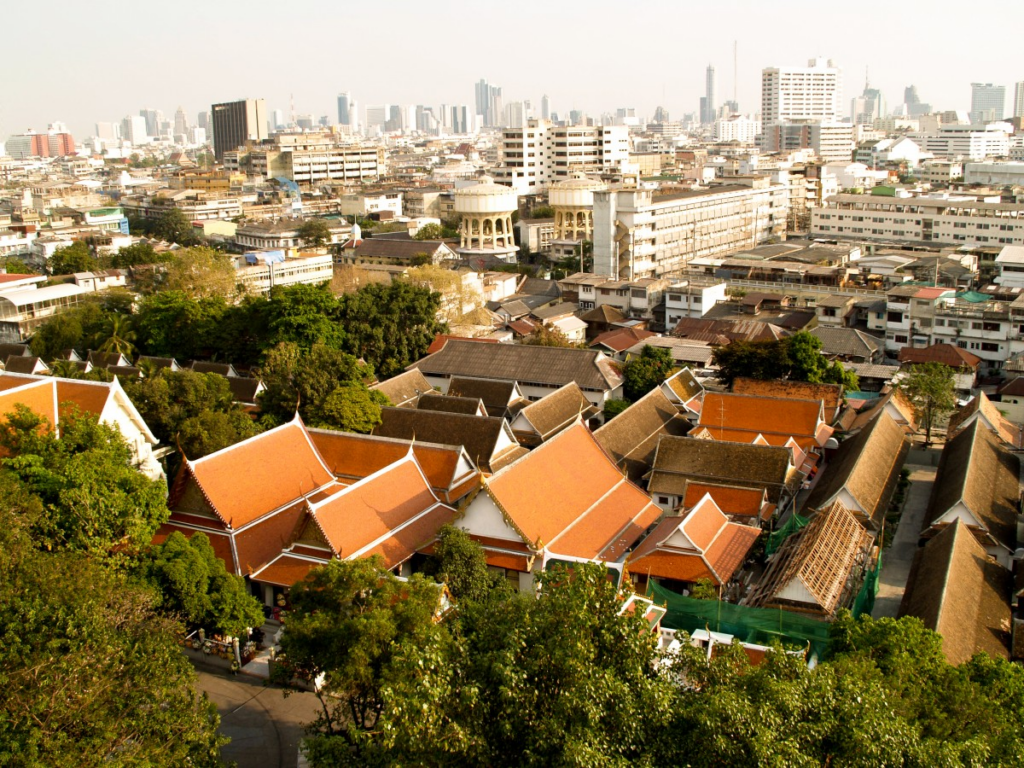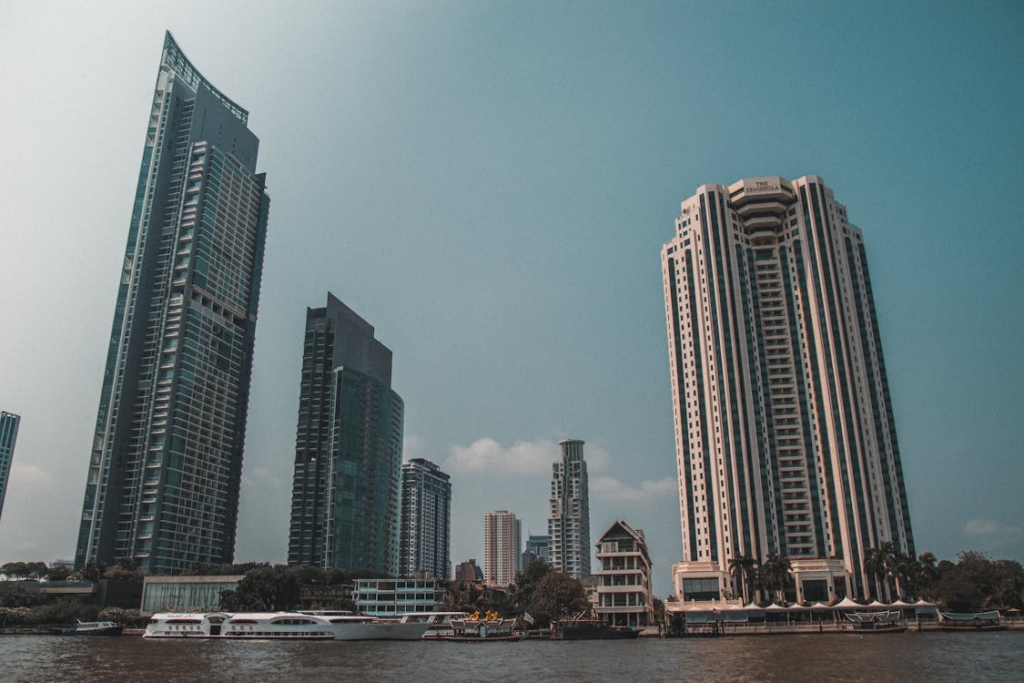
Thailand stands out as one of the most distinctive countries in Southeast Asia, known for its rich history, beautiful culture, and warm hospitality. More than just a popular destination for travellers from around the world, Thailand is also a key economic hub in the region. This article explores various aspects of Thailand, from tourism and population to iconic landmarks, business, and economic growth.
Thailand is renowned not only for its stunning landscapes and cultural heritage but also for its vibrant street life and diverse cuisine. From bustling markets brimming with local delicacies to serene temples reflecting the country’s deeply rooted spirituality, every corner of Thailand offers a unique and captivating experience. Thai food is another major highlight, celebrated for its bold flavours and aromatic spices, drawing visitors to try famous dishes like Pad Thai, Tom Yum Goong, and Som Tum. Furthermore, Thailand’s commitment to hospitality reflects the warmth and friendliness of its people, making every visitor feel welcomed and valued.
Thailand’s Cultural Diversity
Beyond its natural beauty and cultural richness, Thailand strongly emphasises sustainable tourism. Initiatives that promote environmental conservation alongside tourism have become increasingly important. Eco-resorts and community-based tourism projects are expanding, allowing travellers to enjoy Thailand’s natural wonders while supporting local communities. This focus on sustainability not only preserves the country’s natural resources but also enhances the travel experience through deeper cultural immersion and meaningful interactions.
Exploring Thailand’s Natural Wonders
Thailand’s landscape is as diverse as its culture. From the lush mountains in the north—perfect for trekking—to the tranquil southern beaches ideal for relaxation and water sports, the country’s natural beauty is truly breathtaking. National parks like Khao Sok and Erawan are home to a wide range of flora and fauna and offer great opportunities for outdoor adventures. Visitors can connect with nature through activities such as hiking, wildlife spotting, and swimming in crystal-clear waterfalls. Thailand’s dedication to preserving these natural areas ensures future generations will continue to enjoy them.
Thailand is also a cultural melting pot, influenced by diverse ethnic groups and historical traditions. The country’s cultural landscape is filled with festivals, arts, and traditional customs. Major festivals like Songkran (Thai New Year) and Loy Krathong (Festival of Lights) showcase the vibrancy of Thai culture and are celebrated nationwide. Traditional Thai dance, known for its graceful movements and intricate costumes, is another cultural treasure that captivates audiences. These performances are commonly found in tourist areas, providing opportunities to experience Thailand’s artistic heritage firsthand.
1. Tourism in Thailand
Thailand is among the most visited countries in the world, offering attractions that appeal to nature lovers, cultural explorers, and leisure travellers alike.
Major Tourist Destinations
- Bangkok: The capital city is home to significant temples such as the Grand Palace, Wat Pho, and Wat Arun, as well as shopping hubs like Siam Paragon and Chatuchak Market.
- Chiang Mai: A cultural city in the north featuring the famous Doi Suthep Temple and hosting the Yi Peng Lantern Festival.
- Phuket: Famous for its pristine beaches, clear waters, and abundant natural attractions.
- Krabi: Known for world-class scenery at Railay Beach, Phi Phi Islands, and Maya Bay.
- Pattaya: A seaside city with entertainment venues, restaurants, and cultural sites like the Four Regions Floating Market and Sanctuary of Truth.
Popular Tourist Activities
- Scuba diving and snorkelling at the Similan and Surin Islands
- Boat tours in Phang Nga Bay and Damnoen Saduak Floating Market
- Exploring ancient cities in Ayutthaya and Sukhothai
- Sampling authentic Thai cuisine like Tom Yum Goong, Pad Thai, and Som Tum
- Experiencing local Thai life, including traditional Thai massage and Songkran festivities
2. Thailand’s Population
Thailand has a population of around 70 million people, composed of diverse ethnic groups. Thai society emphasises respect, generosity, and a strong connection to Buddhism.
Demographic Structure
- Approximately 95% of the population are ethnic Thais
- Other ethnic groups include Chinese, Shan, Hmong, Karen, and Mon
- The dominant religion is Buddhism (about 94%), followed by Islam and Christianity
Lifestyle and Culture
- Extended families are common, and strong familial bonds are highly valued
- Urban areas like Bangkok and Chiang Mai are modern, while rural regions in the north and northeast maintain traditional ways of life
3. Iconic Landmarks in Thailand

Thailand is home to numerous globally recognised landmarks.
Temples and Religious Sites
- Wat Phra Kaew (Bangkok) – Houses the Emerald Buddha and is a spiritual symbol of the nation
- Wat Phra That Doi Suthep (Chiang Mai) – Located on a mountain, offering panoramic views of the city
Natural Attractions
- Khao Yai National Park – A UNESCO World Heritage site with diverse wildlife and scenic waterfalls
- Erawan National Park – Famous for its emerald-green waterfalls
Historic Sites
- Ayutthaya Historical Park – A former capital city with ancient ruins and temples
- Sukhothai Old City – The cradle of Thai civilisation and a UNESCO World Heritage Site
4. Business and Economy in Thailand

Thailand is one of the largest economies in Southeast Asia, with several key industries driving its growth.
Major Industries
- Tourism – A major source of income, with millions of foreign visitors annually
- Agriculture – Thailand is a leading exporter of rice, sugarcane, cassava, and tropical fruits
- Automotive – A manufacturing hub for global car brands like Toyota, Honda, and Isuzu
- Technology and Digital – Rapid growth in startups and e-commerce businesses
Investment and Economy
- Projects like the Eastern Economic Corridor (EEC) attract foreign investment in the industrial and tech sectors
- Continued infrastructure development, including mass transit systems and international airports
Conclusion
Thailand possesses immense potential in tourism, culture, and economics. With its rich natural resources, diverse attractions, and a growing business sector, the country remains a pivotal hub in Southeast Asia. Whether you’re seeking a travel destination or business opportunities, Thailand stands out as one of the top choices.
Thailand’s Economic Overview
The structure of Thailand’s economy is diverse, blending traditional sectors with modern industries. While tourism plays a key role, agriculture remains fundamental to the economy, contributing to both domestic consumption and export revenues. Thailand has earned the nickname “The Kitchen of the World” for being a major producer of agricultural goods such as rice, seafood, and tropical fruits.
In addition, the rising tech and digital sectors are becoming increasingly significant and may eventually surpass traditional industries. Innovative startups are emerging rapidly in major cities, reflecting a promising future for Thailand’s economy in alignment with global trends toward digitalisation and sustainability.
Thailand’s Future on the Global Stage
As Thailand continues to evolve, it remains an attractive destination for both tourists and investors. Its cultural heritage, natural beauty, and strategic economic initiatives place it firmly on the global map as a nation with both charm and capability.









